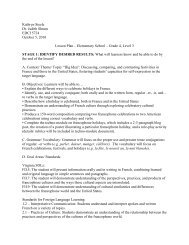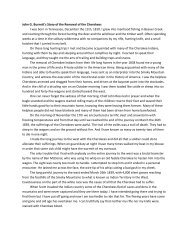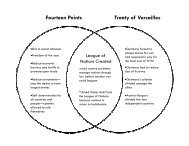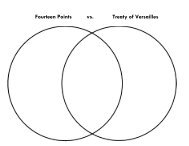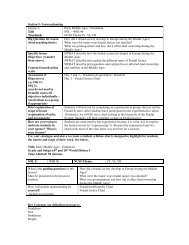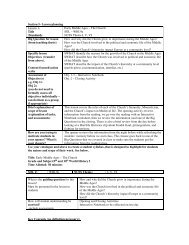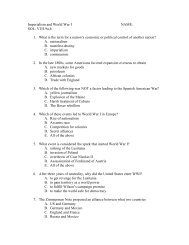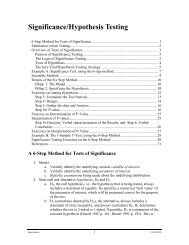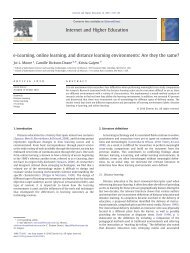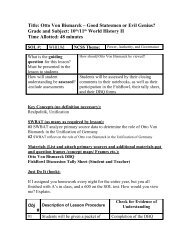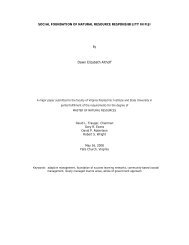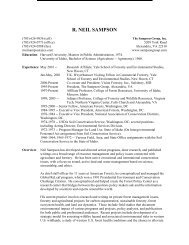Nested Designs - Scholar
Nested Designs - Scholar
Nested Designs - Scholar
You also want an ePaper? Increase the reach of your titles
YUMPU automatically turns print PDFs into web optimized ePapers that Google loves.
other hand, have fixed effects. The investigator is interested in the effects of these five specific<br />
hybrids. They are not randomly selected representatives of a larger population of hybrids. Thus,<br />
their effects are fixed rather than random.<br />
Ott and Longnecker (2001, Section 17.1) have these definitions:<br />
In a fixed-effects model for an experiment, all the factors in the experiment have<br />
a predetermined set of levels and the only inferences are for the levels of the<br />
factors actually used in the experiment.<br />
In a random effects model for an experiment, the levels of factors used in the<br />
experiment are randomly selected from a population of possible levels. The<br />
inferences from the data in the experiment are for all levels of the factors in the<br />
population from which the levels were selected and not only the levels used in the<br />
experiment.<br />
In a mixed effects model for an experiment, the levels of some of the factors used<br />
in the experiment are randomly selected from a population of possible levels,<br />
whereas the levels of the other factors in the experiment are predetermined. The<br />
inferences from the data in the experiment concerning the factors with fixed levels<br />
are only for the levels if the factors used in the experiment, whereas inferences<br />
concerning factors with randomly selected levels are for all levels of the factors in<br />
the population from which the levels were selected.<br />
D e , or by<br />
Notation. It would make sense to denote the random effect of leaf l by ijkl<br />
<br />
D , B, C eijkl<br />
, or even by e eijklbecause<br />
it is a nested effect just like B and C. But the<br />
ijkl<br />
l ijk<br />
fact is that all of the error terms in Anova are always random effects, and, being replicates, are<br />
necessarily nested within other effects.<br />
It is traditional to represent fixed effects by Greek letters and random effects by English letters.<br />
nested01.docx 4 4/5/2012<br />
l ijk



